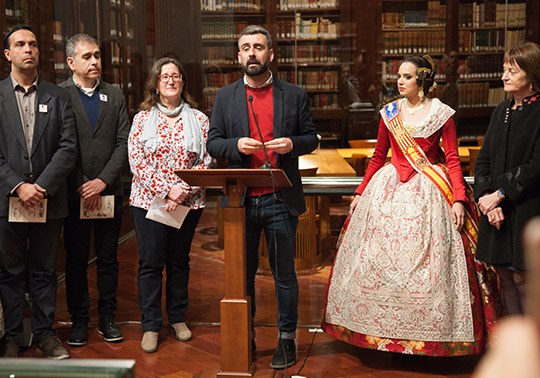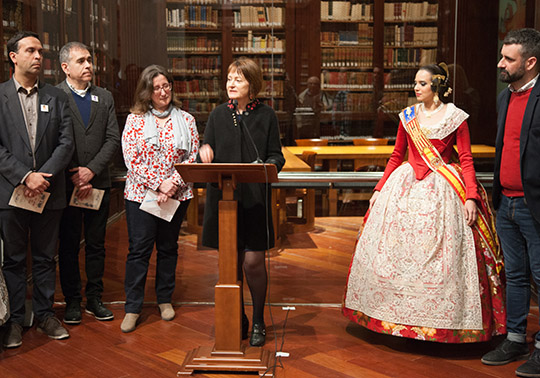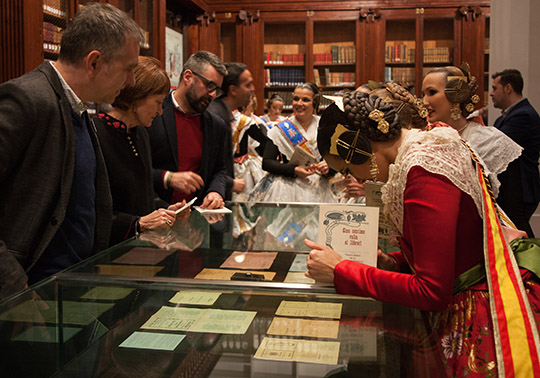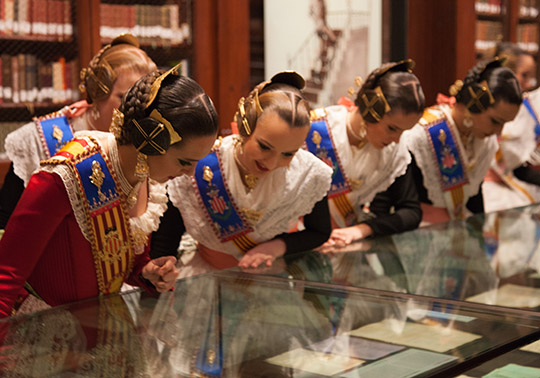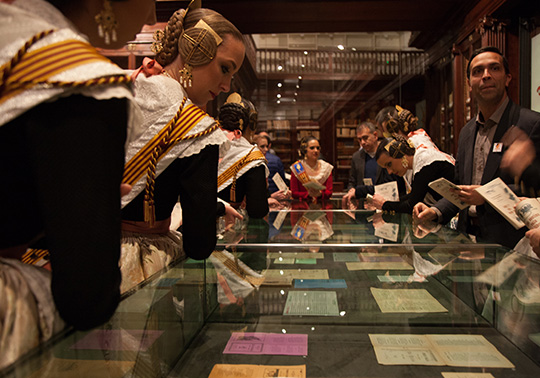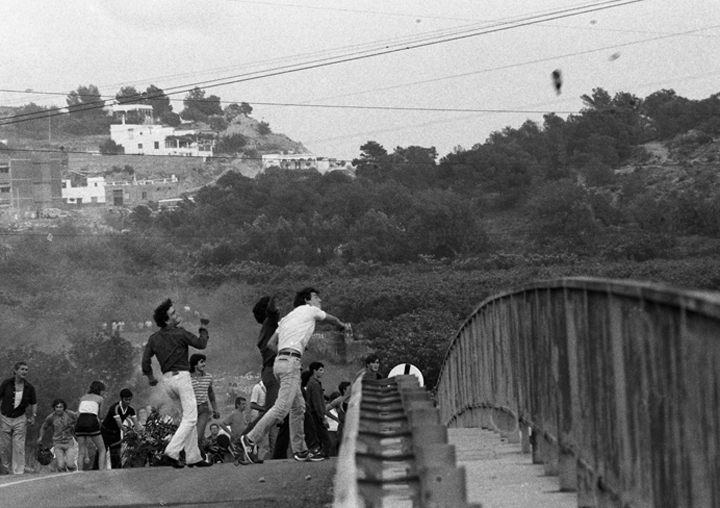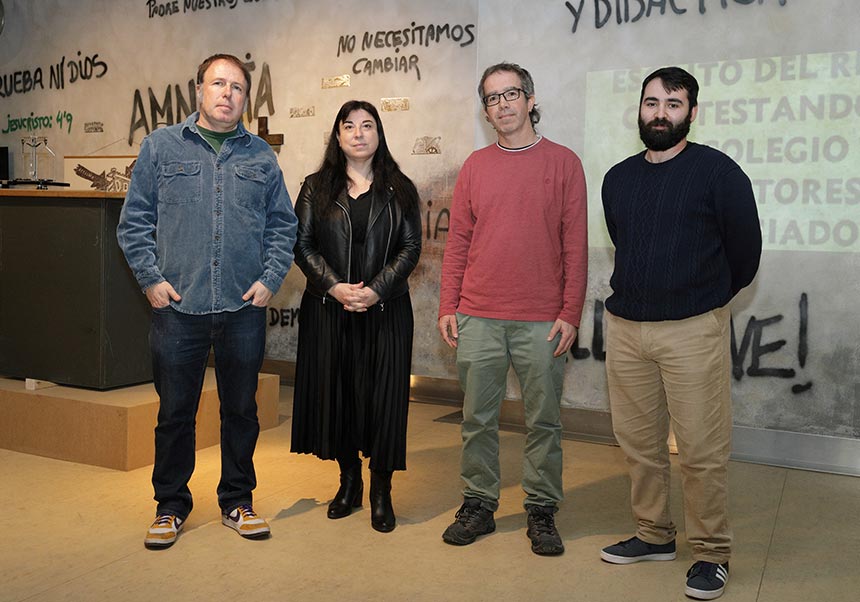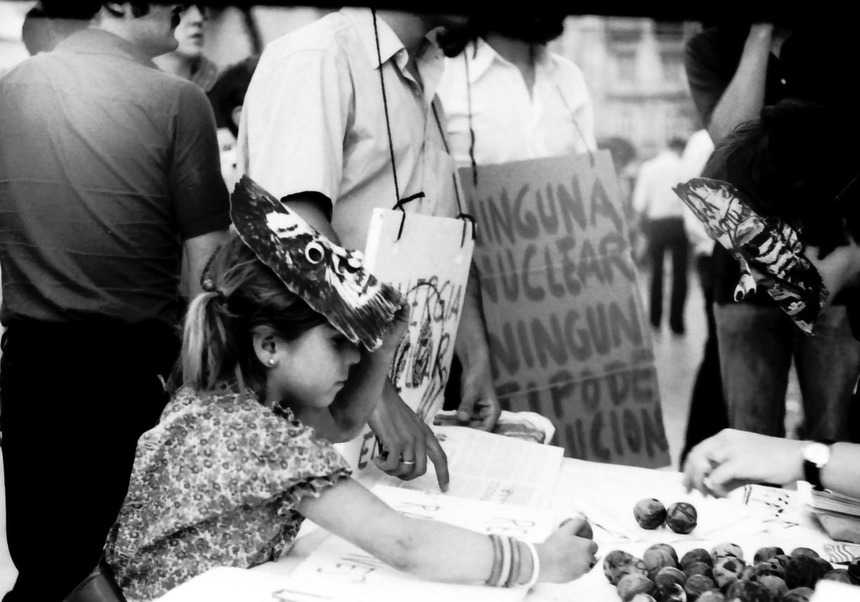The Historical Library of the Universitat de València exhibits its collection of ‘llibrets de falla’ for the first time.
- Office of the Principal
- March 5th, 2019
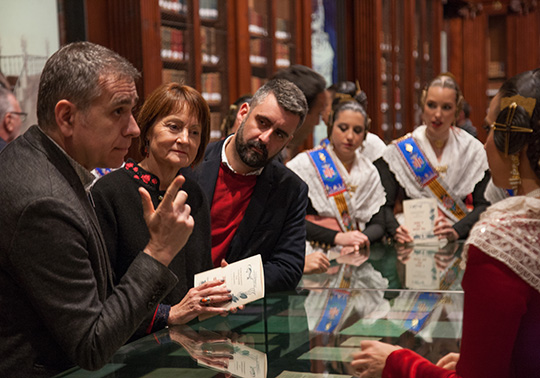
The exhibition ‘Cinc cèntims valia el llibret!’: tresors fallers de la Biblioteca Històrica de la Universitat de València’ was inaugurated being there the principal of the Universitat de València, Mª Vicenta Mestre, the councilman of Festive Culture of the City hall of València, Pere Fuset, and the Fallera Major de València, Marina Civera.
The vice-principal for Culture and Sports, Antonio Ariño, the director of the Libraries and Documentation Service, Victoria García, the director of the Historical Library of the Universitat de València, Mª Jesús García Mateu, and the commissioners of the exhibition Josep Lluís Marín and Javier Mozas, members of the Associació d’Estudis Fallers, were at the inauguration ceremony as well.
The councilman Pere Fuset claimed that ‘Although that for a while it was perceived that the Falles and the Universitat de València were two different worlds, it has nothing to do with that, since it has always existed a link between both’. ‘I have known about the compromise of the Universitat de València with Falles and the Valencian culture, and, therefore, I would be pleased of creating a chair targeted to Falles’, highlighted Fuset.
After his speech, the principal Mª Vicenta Mestre, who heard the wish of the councilman of creating a chair in order to study Falles, reminded that the ‘Universitat de València was created in the city of València, therefore, it was born with the purpose of offering services to the Valencian society. That implies an inexorable link with culture and, as a consequence, with Falles.
The Historical Library of the Universitat de València preserves one of the most comprehensive collections of Falles’ literature in the last third of the 19th Century, which paradoxically is one of the less know. It is a bibliographic fund which comprehends more than two hundred ‘llibrets de falla’, the notebooks where the poems describing each Falla are written. Almost a half of them are only surviving print.
This collection has a special interest, as it takes us to the moment in which Falles become important in the Cap i Casal calendar, in a difficult moment because of the control attempts of the authorities trying to manage the popular tradition. It was also when the ‘llibrets de falla’ became a singular editorial product together with some other peer satiric literature creations.
In the exhibition, one can admire the most ancient known ‘llibret’ , dating 1855, written by Josep Bernat i Baldoví, which corresponds to the del al plaça de l’Almodí, as well as some singular know copies.
The evolution of the ‘llibret’ as a result of the creation of some new formats, the new contents or their authors could be appreciated in the exhibition.
In the 19th Century some ‘llibrets’ took the format of a Magazine and they also had the explanations edited by the commissions. It is the case of the Araña Negra, La Pulga o Chaucha: periòdic buñolero.
There are some ‘llibrets’ which show how the figures, called ‘ninots’, were made (Falla del carrer Carabasses, 1880), other ones which reproduce how an indoor Falla was (Falla Trós-Alt, 1880) or some which include the event programme (Falla del carrer dels Drets, 1887).
Some testimonies on the action of censorship exercised by the authorities, such as the llibret ‘La creu del matrimoni (1866), written by Blai Bellver or the llibret written by Maximilià Thous (1904), which criticised the drinking water network.
The exhibition ‘Cinc cèntims valia el llibret!’ shows a selection of these llibrets, which is completed with some documents linked with Falles and some other festivities of the city coming from Libraries of the Universitat de València. They all allow us to experience the Falles of the moment and everything they implied through the different literary works.
After the first press references to Falles (Diari de València, Semanario Pintoresco Español, El Cid), the last part of the exhibition shows a selection of a high cultural valued ‘llibrets’ belonging to different falles (Plaça del Ferrocarril, Carrer de Sant Vicent, Pl. Doctor Collado, Sogueros, Russafa, El Pilar, Arrancapins).
Moreover, this exhibition helps to vindicate the importance of the public records and libraries for the conservation and the dissemination of every heritage element which contributes to perpetuate Falles, a universal event.
More information:
Images:File in: Exposicions



